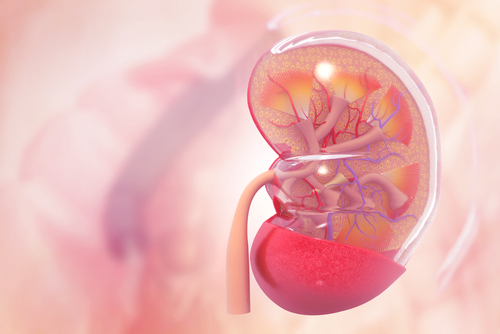Cyclosporine Shows Both Quick Response and Long-Term Efficacy as Maintenance Therapy, Study Finds
Written by |

In terms of kidney health, cyclosporine is a more effective long-term maintenance therapy for people with lupus nephritis than either mycophenolate mofetil or azathioprine, new data suggest.
Largely, the researchers drew this conclusion because patients using it — even in the presence of high urine protein levels — went into remission more quickly than those on the other treatments, and stayed stable comparatively well.
These findings were detailed at the Annual European Congress of Rheumatology (EULAR 2019) in a presentation titled, “Multicenter Study Comparing Cyclosporine, Mycophenolate Mofetil and Azathioprine in the Maintenance Therapy of Lupus Nephritis: 10 Year Follow Up.”
Lupus nephritis – inflammation of the kidneys caused by systemic lupus erythematosus (SLE) – is “a serious condition requiring early aggressive therapy to achieve remission,” John D. Isaacs, PhD, chairperson of the Abstract Selection Committee at EULAR, said in a press release. “However, the type and duration of immunosuppression after achieving response remain a matter of controversy.”
In the study, 104 lupus nephritis patients who had just been diagnosed or who were experiencing a flare were treated with a six-month induction therapy — a heavy course of immune system-suppressing drugs.
Then, they were given either cyclosporine, mycophenolate mofetil, or azathioprine (32, 36, and 36 people, respectively) as maintenance therapy, which is a less intensive therapy to prevent further flares and damage.
Patients’ clinical characteristics were similar at baseline (before any therapy), and there weren’t any significant differences in the kind of induction therapy used among the groups. However, the researchers noted that people in the cyclosporine group happened to have more protein in their urine (proteinuria, a marker of poor kidney health).
The patients were followed for 10 years; at one, five, and 10 years into treatment, their kidney health was assessed with measurements like assessing proteinuria. Based on these tests, the researchers determined whether patients had a complete, partial, or no response to the maintenance treatment.
At the beginning of maintenance therapy (that is, right after induction therapy), complete response rates were 28.2% among patients on cyclosporine, 50% among those using mycophenolate mofetil, and 38.8% on those given azathioprine.
One year into treatment — after six months of induction therapy and six months of maintenance therapy — the rates increased to 72%, 64%, and 44.2%, respectively. By five years, complete response rates were 81.5% in the cyclosporine group, 86% in those on mycophenolate mofetil, and 81% in the azathioprine; at 10 years, they were 84.5% (cyclosporine), 72% (mycophenolate mofetil), and 70% (azathioprine).
No side effects were reported in over 80% of the people in all three groups.
These results show that, overall, all three of these treatments are relatively effective — but the cyclosporine results were of particular “interest.”
“Our study is the first to compare these three drugs as maintenance therapy in the long term,” said Lorenza Maria Argolini, Rheumatology Consultant of the Lupus Clinic, ASST Pini CTO, Milan, Italy. “Of interest are the results achieved in the [cyclosporine] group where, despite worse clinical conditions at the beginning of maintenance therapy, we observed a rapid achievement of remission in the great majority of patients.”
Their “remission persisted over 10 years of observation,” the researchers wrote.
“It is great to see these long-term data which will help further our understanding in this complex area,” Isaacs added.




